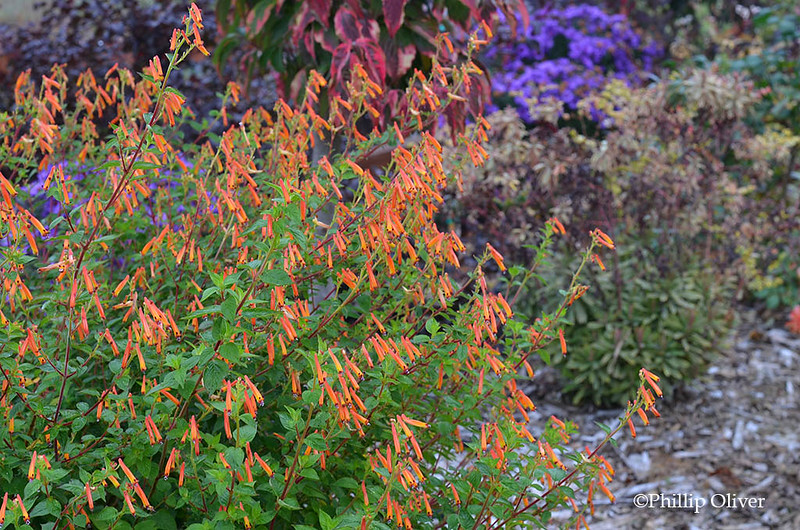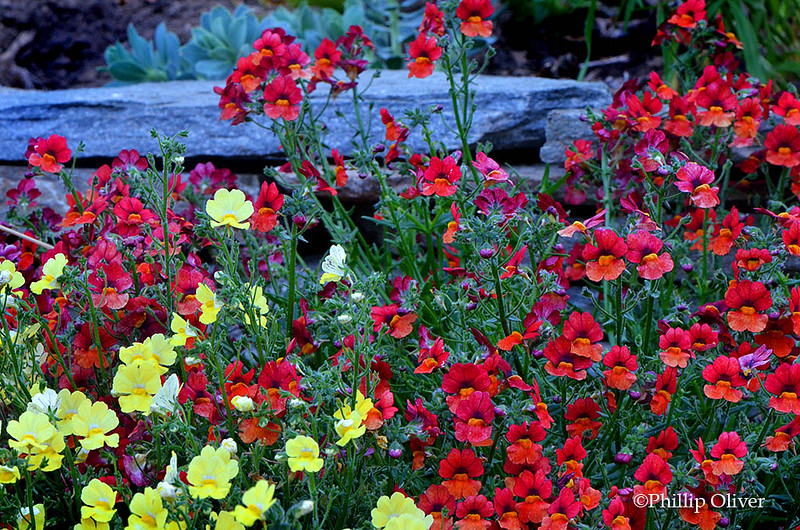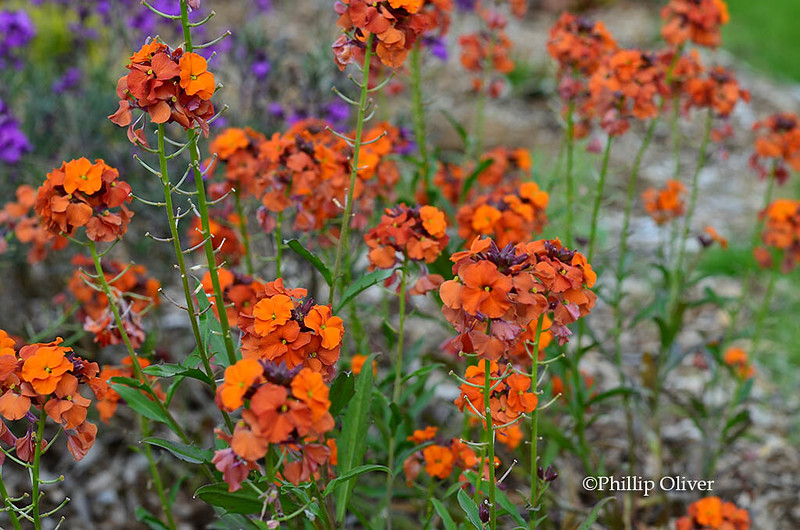I was ready to title this post "Winners and Losers" but then I thought, "Can any plant be a loser?" - well, maybe poison ivy? (And some good news for me - poison ivy is rare here, found mainly in the wilderness areas. No more yearly poison ivy shots and steroid packs!) Another reason I abandoned the losers idea is because there was just a small number of plants that fit into that category. I will give them a mention at the end of the post.
So, a trip down memory lane of the past year and a look at the garden plants that excelled. I am focusing on plants that I have grown for the first time. As a new gardener here in the Pacific Northwest, I am still learning. Overall, I would say that gardening in this area of the country is much easier. For me, the absence of humidity is wonderful. It means I can play all summer long in the garden without breaking into a sweat. There are challenges of course, the chief one being the absence of rain during the summer months. That means lots of watering. On the other hand, there are many plants here that thrive in the dry summer/wet winter conditions.
Strawberry Tree (
Arbutus unedo)
The first time I ever heard of the Strawberry Tree was decades ago when I read a short story by that title by my favorite writer Ruth Rendell. It is reputed to be an idea coastal plant but does well inland here as well although it can be damaged in severe winters. Despite the foot of snow we got last January, ours was unscathed. It is still rather small, about 5 feet tall. It has been covered in small urn-shaped flowers for months now. A strawberry-like fruit appeared before the flowers. The evergreen leaves are attractive and the red-brown bark gets more attractive as it ages.
Cuphea 'Strybing Sunset'

One of my favorite perennials is this Cuphea which is loaded with orange tubular flowers. I overwintered it in the garage last winter and moved it to a sunnier spot this year. It was slow to bloom but once it started, the flowers remained up until frost. It is a hummingbird magnet which is just another reason to love it.
Nemesia

What a little workhorse this annual has been. I was told that they were nice in the Spring but not to expect much in the Summer as they fizzled out in the heat. This not only flourished non-stop through the entire season but it thrived in a hot, dry raised bed surrounded by stones.
Erysimum (Wallflower)

This was the first time I ever grew Wallflowers. They were so pretty in the nursery that I brought some home. I planted "Apricot Twist" alongside "Bowle's Mauve" and they bloomed all summer. I have read that this is a short-lived perennial so I will be curious to see how it does next year.
Asters
All of the Asters in the garden have performed exceedingly well. I have went a bit overboard with them and have amassed a small collection already. One of my favorites is "Purple Dome".
Euphorbia myrsinites (Myrtle Spurge)
A great recommendion by a co-worker, it is thriving in the drought tolerant terraced area. It brings great texture to the garden.
California Fuchsia (Epilobium septentrionale 'Select Mattole')

Another great perennials for dry areas, this one loves the heat and sun. It has a low, mounding habit with silvery leaves and orange flowers. I am going to try this one in the hell strip area next year as well.
And for the not so stellar -
 |
| I would include Aubrieta, a plant that I hoped would drape over the tall retaining walls along the driveway. This was pretty when it bloomed but it pretty much petered out during the summer. I am still looking for plants that will drape over the walls in this tough, hot, dry situation. Any suggestions? |
 |
| Lophospermum grew okay in a small hanging basket but it was never covered with profuse blooms like I hoped. Perhaps this would do better in the ground and along the retaining wall? I am not sure but might give it another try next year. |
Some plants that did not make it from last year include Sweet Pea Shrub (
Polygala x
daimaisiana), Gladiolus dalenii
‘Bolivian Peach’, several (all) varieties of Agastache and
several Hebes.
What did well in your garden this year?










Happy New Year, Phillip! I enjoyed seeing what is succeeding in your garden, though I am very jealous of your mild summers! I discovered Wallflowers a couple years ago. Amazing, they do very well here in Alabama. I grow them through fall, winter and spring like pansies. They will survive the summer but look dreadful.
ReplyDeleteA good word for poison oak: It provides the most beautiful red color in fall in moist areas in the mid-elevation mountains in southern California.
ReplyDeleteLovely! You've got a great knack for color, Phillip. I want to try that Cuphea :)
ReplyDeleteAubretias knock me off my socks when they bloom, and then--I've never solved this at all--they look like heck. Then they bloom and I forgive them again. Traditional companion with them is Candytuft (Iberis), which also drapes, and stays nicer looking, but it is an older look. (It was once THE ubiquitous spring look here--with the Phlox subulata types and Grace Ward Lithodora--pretty much OVER done.) Ericas & Callunas will cascade after some time, as will Helianthemum, Zauschneria, Dianthus. You say this is a tall wall though? There are some large/long cascaders--I can think of several...wondering which sort of look you're after--fat and fluffy like 'Ogon' Spiraea, or straight down like a vine maybe? Xera's got a cool one (vine) for hot-dry...the name escaping me at the moment. Kinnikinnick makes a great spilling form after a few years, drought tolerant, native. If it's a REALLY hot, dry wall...hmmmm. A bit of irrigation would help all of the above, in that situation. Perhaps the Zauschneria best for that.
Alyse, thanks for the suggestions. I think the Zauschneria would work. These are the retaining walls that run along the driveway. Our driveway goes downhill from the street (the garage is under the house) and the front garden area is raised. I want long and cascading plants to drape over them. Bougainvillea would be great but I have yet to get it to winter over.
DeleteI love that you call your plants "winners." I always call my new plants "survivors" and "champions." We have the worst soil (if you want to call it that) in Folsom...basically sand and rocks/boulders...so anything that survived was a champion in my book.
ReplyDeleteWhat about Cerastium candidissimum, Rubus calycinoides “Creeping Raspberry” and/or Lysimachia nummularia ‘Aurea’ for spilling over? They grow down to Zone 5. (FYI ideas from Annie's Annuals, but not currently available.) Each offers different textures and colors, and two out of three are drought tolerant.
It will be interesting to see how Zauschneria behaves in your zone by the end of the year. As a native, it typically grows way out of bounds here in CA. I had to search for the most-manageable variety for my garden.
It has been fun watching your garden grow. You must be thrilled.
Thank you for those suggestions. I actually have considered the Rubus. I will take a look at the other two.
DeleteYour flowers are pretty. I can't tell you what would hang over your wall and be pretty all summer. You can grow so many things I could not grow. I hope you get some good suggestions. As to my gardening year past...ugh...I hate to whine but it didn't rain and then we had such a drought. I am hopeful that all the shrubs and trees we planted survive. I will have to wait to see. I am looking forward to this 2018 season of gardening. Right now record cold so I can stay inside and dream.
ReplyDeleteI hope they turn out okay. There is nothing worse than a drought!
DeleteAll the fabulous color in this post really gave me a boost on this white and bitter cold winter day here in Ohio!
ReplyDeleteI never thought of trying to overwinter Cuphea and have always grown it as an annual. I'll drag mine in next year! All of these warm and wonderful colors are just the thing for this cold winter day!
ReplyDelete